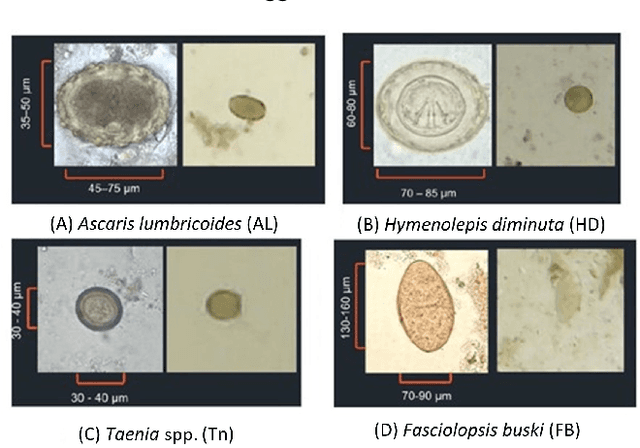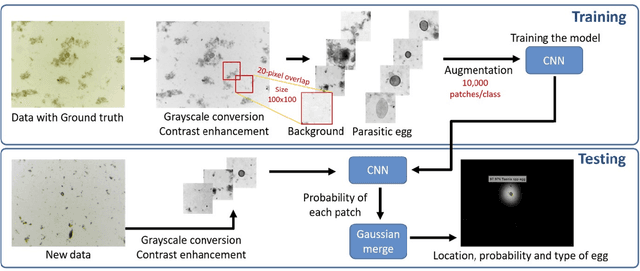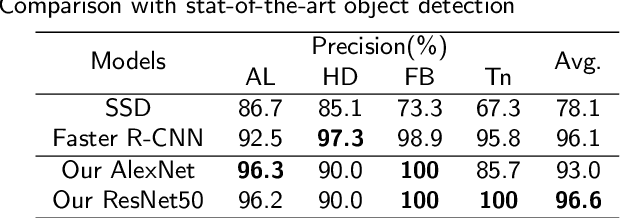Parasitic Egg Detection and Classification in Low-cost Microscopic Images using Transfer Learning
Paper and Code
Jul 02, 2021



Intestinal parasitic infection leads to several morbidities to humans worldwide, especially in tropical countries. The traditional diagnosis usually relies on manual analysis from microscopic images which is prone to human error due to morphological similarity of different parasitic eggs and abundance of impurities in a sample. Many studies have developed automatic systems for parasite egg detection to reduce human workload. However, they work with high quality microscopes, which unfortunately remain unaffordable in some rural areas. Our work thus exploits a benefit of a low-cost USB microscope. This instrument however provides poor quality of images due to limitation of magnification (10x), causing difficulty in parasite detection and species classification. In this paper, we propose a CNN-based technique using transfer learning strategy to enhance the efficiency of automatic parasite classification in poor-quality microscopic images. The patch-based technique with sliding window is employed to search for location of the eggs. Two networks, AlexNet and ResNet50, are examined with a trade-off between architecture size and classification performance. The results show that our proposed framework outperforms the state-of-the-art object recognition methods. Our system combined with final decision from an expert may improve the real faecal examination with low-cost microscopes.
 Add to Chrome
Add to Chrome Add to Firefox
Add to Firefox Add to Edge
Add to Edge